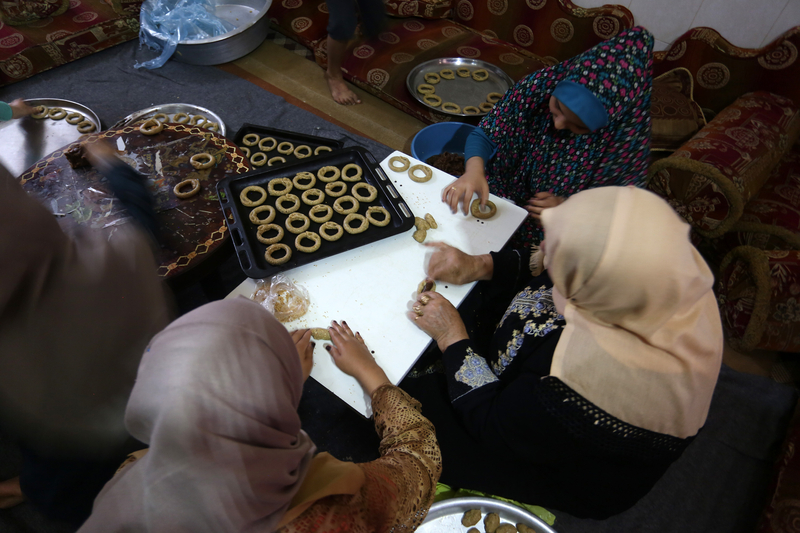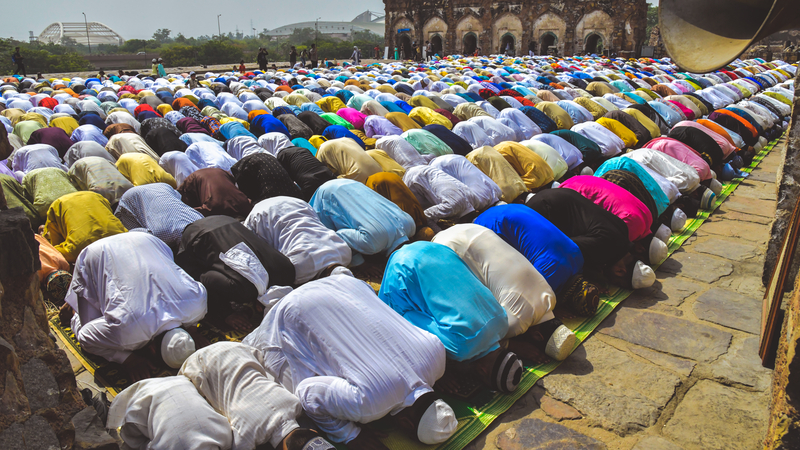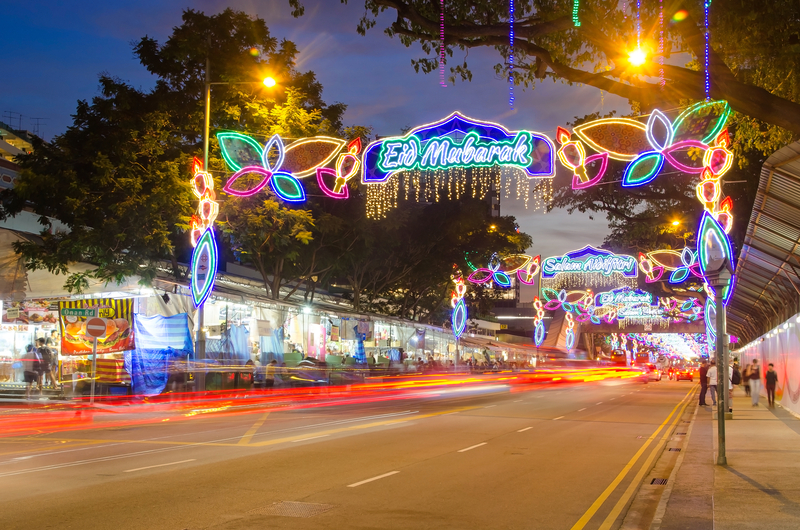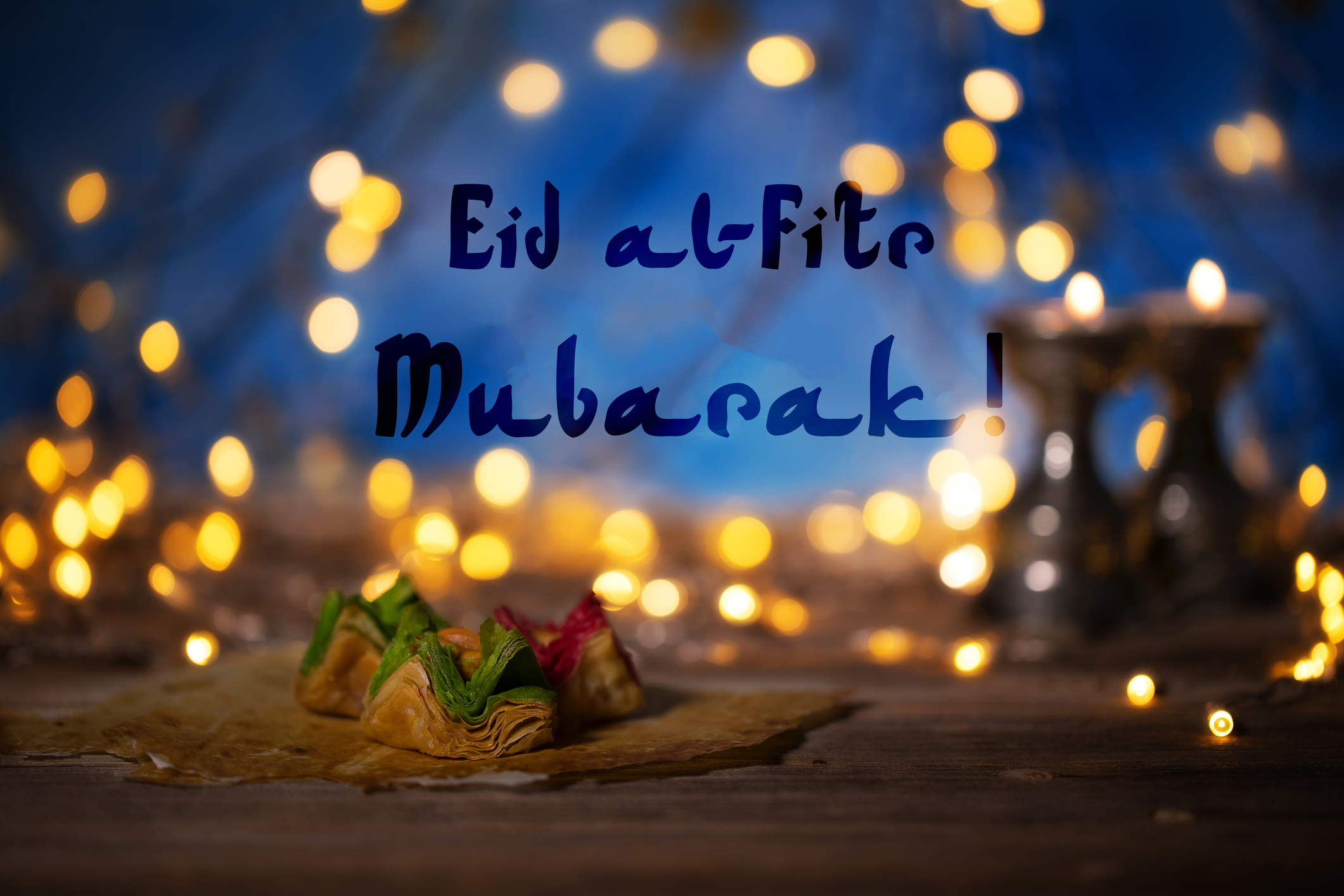Find out more about The Open University's Religious Studies qualifications.
Eid al-Fitr is one of the two principal festivals celebrated by Muslims, with the other being the Eid al-Adha. Eid means festival and the Eid al-Fitr is the Feast of Breaking the Fast, sometimes also called the Festival of Sweets. It may be referred to as the ‘lesser Eid’, and the Eid al-Adha the ‘greater Eid’. The Prophet Muhammad is believed to have introduced both festivals. The Eid al-Fitr takes place during the first days of Shawwal, the tenth month of the lunar calendar (usually called the Hijri calendar), which Muslims use to work out the dates of important Islamic festivals. The Eid al-Adha takes place during the twelfth month.
According to the Hijri calendar, the months are 29 or 30 days long, and 354 days in all. This means that the lunar year is 11 days shorter than the 365 days of the solar year. As a result, each year Eid-al-Fitr and the other major Muslim festivals are 10 or 11 days earlier than the previous year; unlike, for example, Christmas, which is calculated according to the Gregorian solar calendar and therefore always occurs at the same point in the year.
 Palestinian women prepare traditional cookies ahead of the Eid al-Fitr festivities.
Palestinian women prepare traditional cookies ahead of the Eid al-Fitr festivities.
The Eid al-Fitr follows the fast during the lunar month of Ramadan (the
ninth month), during which Muslims are expected not to eat or drink from dawn
to dusk for 30 days. A special evening meal that follows the day of fasting is
known as iftar, and various iftar events open to non-Muslims are being
held in a number of cities across the UK. Towards the end of Ramadan is the
‘Night of Power’, commemorating the night during which Muhammad received the
first of the revelations that make up the Qur’an (for Sunni Muslims this is
usually the 27th night and for the minority Shi’a the 23rd).
During Ramadan the whole Qur’an may be recited, 1/30 of it each day,
accompanied by special prayers.
During the final days of Ramadan people will usually have begun preparing for the Eid al-Fitr. This is among other things a celebration of family and community, and those who have moved away for work may return home to their families; nowadays people may also go away on holiday at this time. It begins when the new crescent moon is first seen. Though usually referred to as the ‘lesser Eid’, the Eid al-Fitr often has often been more prominent than the Eid al-Adha because of the demands of the Ramadan fast and ‘the mood of celebration that accompanie[s] its successful completion’ (Douglass, 2002, p. 2). In Muslim-majority countries Eid al-Fitr is usually a public holiday, with banks, offices and schools closing. It usually last for three days. There may be official gatherings attended by political leaders, government officials and influential members of the community.
 Muslim men and children bowing down and offering prayers during Eid`Al-Fitr.
Muslim men and children bowing down and offering prayers during Eid`Al-Fitr.
On the first day of the festival men should gather to perform a special congregational prayer, which is usually followed by a sermon. Numbers may be too great for them to meet in a mosque and the prayer may be performed in a special prayer ground (Eidgah or musalla). Fasting during the Eid is forbidden. Charity is an important theme, and a Muslim should offer charity (zakat al-fitr or zakat Ramadan), often in the form of food, to the needy towards the end of Ramadan and during the Eid al-Fitr itself.
In the past the end of Ramadan was often commemorated with elaborate celebrations, including grand processions to the ruler’s palace, and decorated buildings. ‘Medieval reports of the ‘[E]id al-Fitr festival in Baghdad’, for example, ‘have described the city as decorated like a bride with miles of colored fabric, paper, carpet, and lamps everywhere from the humblest houses or shops to the most splendid palaces. The Tigris was filled with decorated and torch-lit boats, from the ceremonial barges and floats of the khalifa [caliph], which might be shaped like animals or mechanized with moving parts, to the less spectacular imitations put afloat by persons of means. People feasted in homes, shops, garden, and palaces. It was a time of generosity when the wealthy hosted common folk and provided them with food and entertainment, as well as gifts of coins and clothing’ (Douglass, 2002, pp. 3–4). Charity has always been an important feature of Eid. An Eid custom in the Ottoman Empire for example was for the better-off to visit local markets and pay off needy customers’ debts (Ergil, 2021).
 Colourful lights in Singapore during Eid al-Fitr.
Colourful lights in Singapore during Eid al-Fitr.
Nowadays the Eid al-Fitr celebrations are of course rather different, but it is still a time for celebration, giving, family and friendship. People usually decorate their homes, prepare special food, and put on their best clothes and wear perfume. After the congregational prayer, they usually spend some time at relatives’ graves, and visit relatives and friends, greeting them with the words Eid Mubarak (‘may your Eid be blessed’) or less commonly perhaps Eid Saeed (‘happy Eid’). They may send cards with this message. Children are usually given sweets and sometimes money. ‘The spirit and joyousness remind one of the celebration of Christmas’ comments one scholar (Esposito, 1998, p. 91). People are encouraged to forgive and ask for forgiveness. Men may hug men they do not know in the street and women hug women.
Mosques and streets may be specially illuminated. People gather in public spaces and there may be various entertainments, including musical performances, fireworks, puppet shows, singing, drumming and (segregated) dancing, and swings, bouncy castles and carousels may be provided for children. In some countries women and girls may decorate their hands with henna. Eid al-Fitr is not usually a public holiday in the UK or other countries where Muslims are a minority, but Muslims in the UK may take a day off work or school to celebrate; according to the Department of Education ‘schools must treat absence as authorised when it is due to religious observance’. In May 2022 US President Biden revived the practice, abandoned by his predecessor, of holding a reception at the White House to celebrate the Eid al-Fitr.







Rate and Review
Rate this article
Review this article
Log into OpenLearn to leave reviews and join in the conversation.
Article reviews